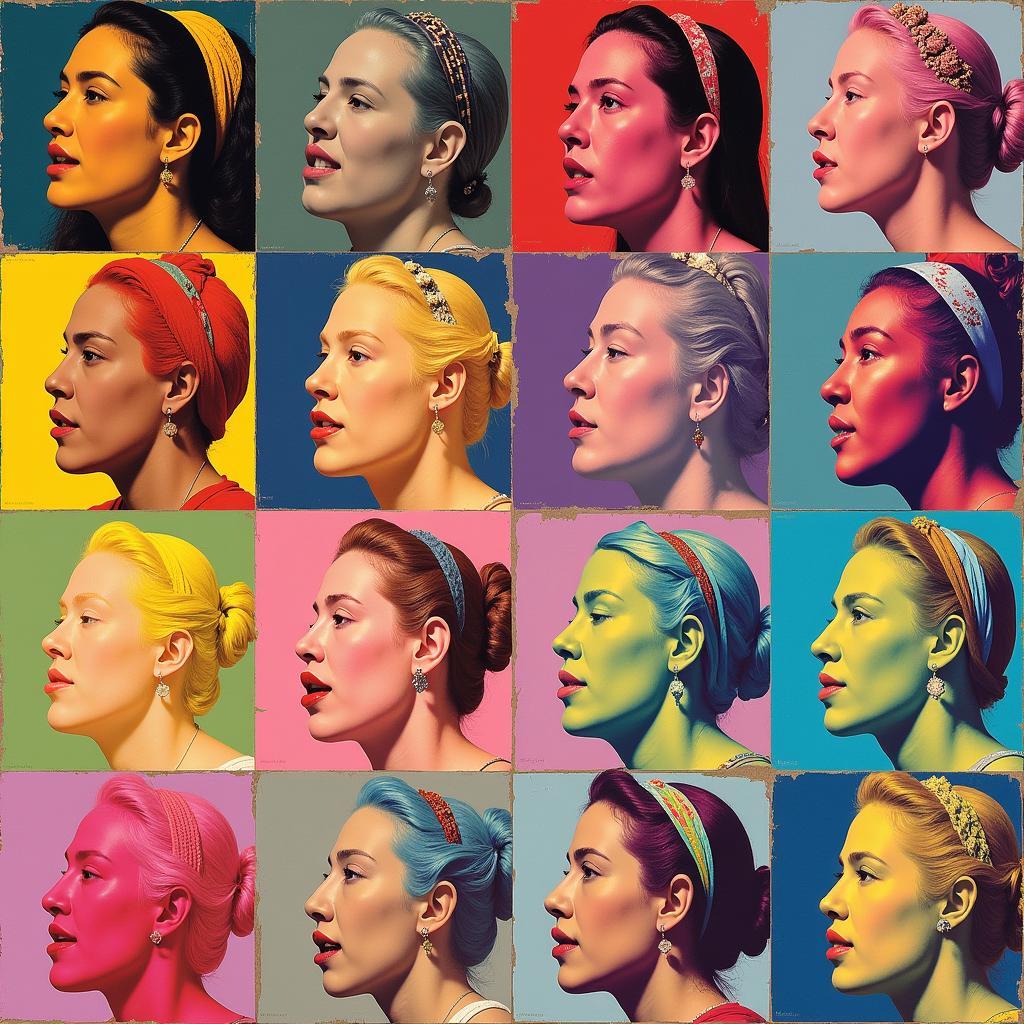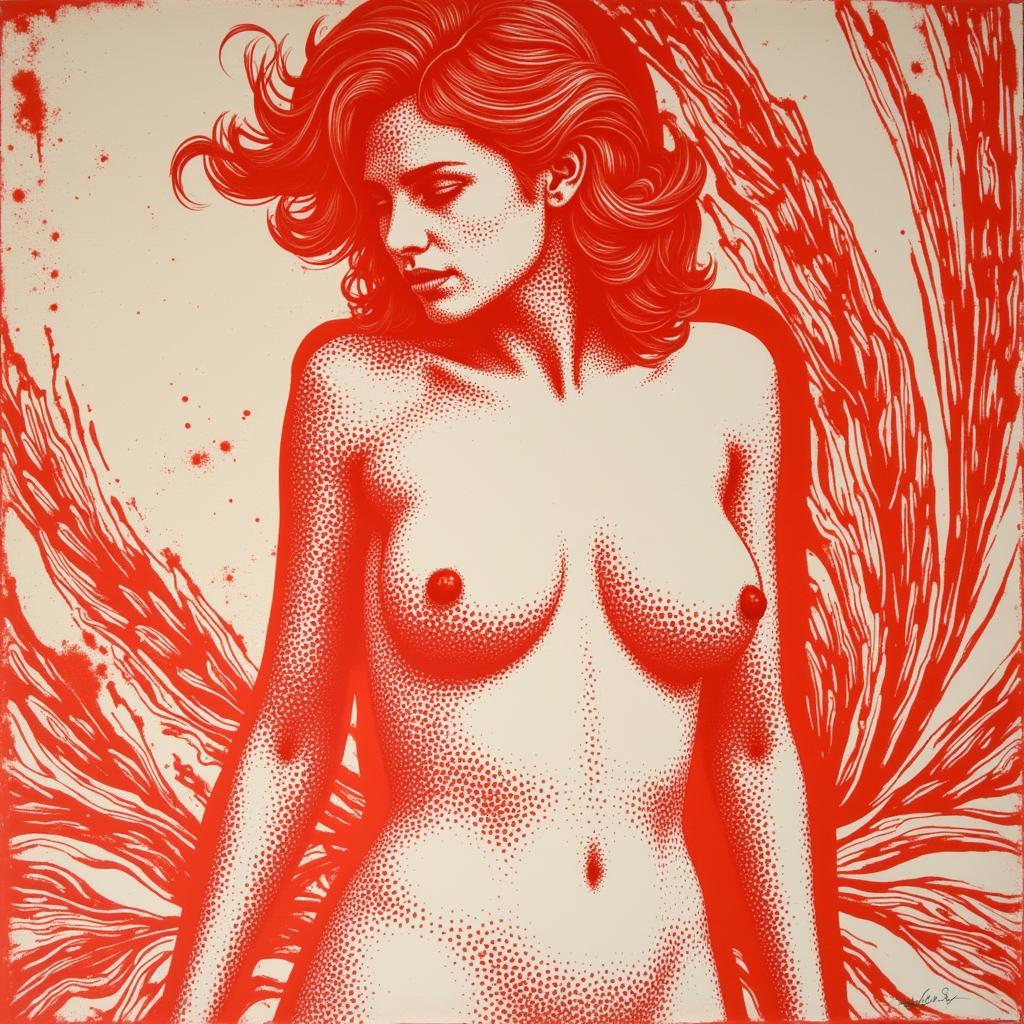Andy Warhol’s “Details of Renaissance Paintings (Sandro Botticelli, Birth of Venus, 1482)” takes the iconic Renaissance masterpiece and reimagines it through the lens of Pop Art. This exploration delves into Warhol’s fascination with classical art, his unique approach to reproduction, and the significance of his “Details of Renaissance Paintings” series. We’ll examine how Warhol transformed Botticelli’s Venus into a symbol of mass culture and consumerism, questioning the very nature of art and its reproduction in the modern age.
Warhol’s Fascination with Classical Imagery: Botticelli’s Venus Reimagined
Warhol, known for his Campbell’s Soup cans and Marilyn Monroe portraits, surprisingly turned to classical art in the 1980s. This seemingly unexpected move reveals a deeper layer to Warhol’s artistic vision. He wasn’t just interested in the superficial aspects of pop culture; he was fascinated by the idea of image reproduction and the evolving relationship between art and commerce. By appropriating Botticelli’s “Birth of Venus,” Warhol challenged traditional notions of originality and artistic authorship. He transformed a revered masterpiece into a mass-produced commodity, reflecting the consumerist culture of his time.
 Andy Warhol's Pop Art Interpretation of Botticelli's Birth of Venus
Andy Warhol's Pop Art Interpretation of Botticelli's Birth of Venus
Deconstructing the Divine: Warhol’s “Details of Renaissance Paintings”
The “Details of Renaissance Paintings” series, which includes “The Birth of Venus,” exemplifies Warhol’s method of cropping and isolating specific sections of classical artworks. This fragmentation removes the original context and forces the viewer to engage with the image in a new way. By focusing on details, Warhol abstracts the familiar narrative of Venus’s birth, emphasizing the aesthetic qualities of form, color, and composition. He transforms the goddess of love into a series of graphic elements, a product for mass consumption. This approach questions the aura of the original artwork and its place in a society saturated with reproduced images.
The Commercialization of Art: Venus in the Age of Mass Production
Warhol’s silkscreen technique further emphasizes the mass-produced nature of his work. The repetitive nature of the prints, often in vibrant, unnatural colors, strips away the sense of unique artistic creation. This mirrors the mass production of consumer goods, blurring the lines between high art and commercial products. Venus, once a symbol of divine beauty, becomes a commodity, an icon of popular culture. This transformation reflects Warhol’s commentary on the commercialization of art in the 20th century.
Redefining Art’s Value: From Unique Masterpiece to Reproducible Image
Through his “Details of Renaissance Paintings,” Warhol asks us to reconsider what constitutes art and its value in a world of mechanical reproduction. Is the original masterpiece more valuable than its reproduced counterpart? By challenging traditional notions of originality and artistic genius, Warhol elevates the mundane to the realm of high art, forcing us to confront the changing landscape of artistic production and consumption in the modern era.
Why Did Warhol Choose Botticelli’s Birth of Venus?
Warhol likely chose “The Birth of Venus” due to its iconic status and recognizable imagery. Its inherent beauty and cultural significance made it a perfect subject for Warhol’s exploration of art and commerce.
 Andy Warhol's Birth of Venus Silkscreen Technique
Andy Warhol's Birth of Venus Silkscreen Technique
Conclusion: A Pop Art Legacy
Andy Warhol’s “The Birth of Venus” offers a provocative reinterpretation of a Renaissance classic. By appropriating and fragmenting Botticelli’s masterpiece, Warhol explores themes of mass production, consumerism, and the evolving definition of art in the modern age. His work continues to challenge our understanding of artistic value and the relationship between art and commerce, leaving a lasting legacy on the world of Pop Art.
FAQ
- What is the name of Warhol’s series featuring “The Birth of Venus”? Details of Renaissance Paintings.
- What technique did Warhol use to create these works? Silkscreen printing.
- When did Warhol create this series? The 1980s.
- Why did Warhol choose “The Birth of Venus”? Its iconic status and recognizable imagery.
- What themes does this series explore? Mass production, consumerism, and the changing definition of art.
- Where can I see these works? Various museums and private collections.
- What is the significance of Warhol’s use of vibrant colors? It enhances the Pop Art aesthetic and contrasts with the original’s muted tones.
Other Related Questions
- How did Warhol’s approach to art differ from traditional artists?
- What other Renaissance works did Warhol reinterpret?
Need Help?
Khi cần hỗ trợ hãy liên hệ Số Điện Thoại: 0909802228, Email: doibongda@gmail.com Hoặc đến địa chỉ: 101 Đ. Lý Chiêu Hoàng, Phường 10, Quận 6, Hồ Chí Minh, Việt Nam. Chúng tôi có đội ngũ chăm sóc khách hàng 24/7.